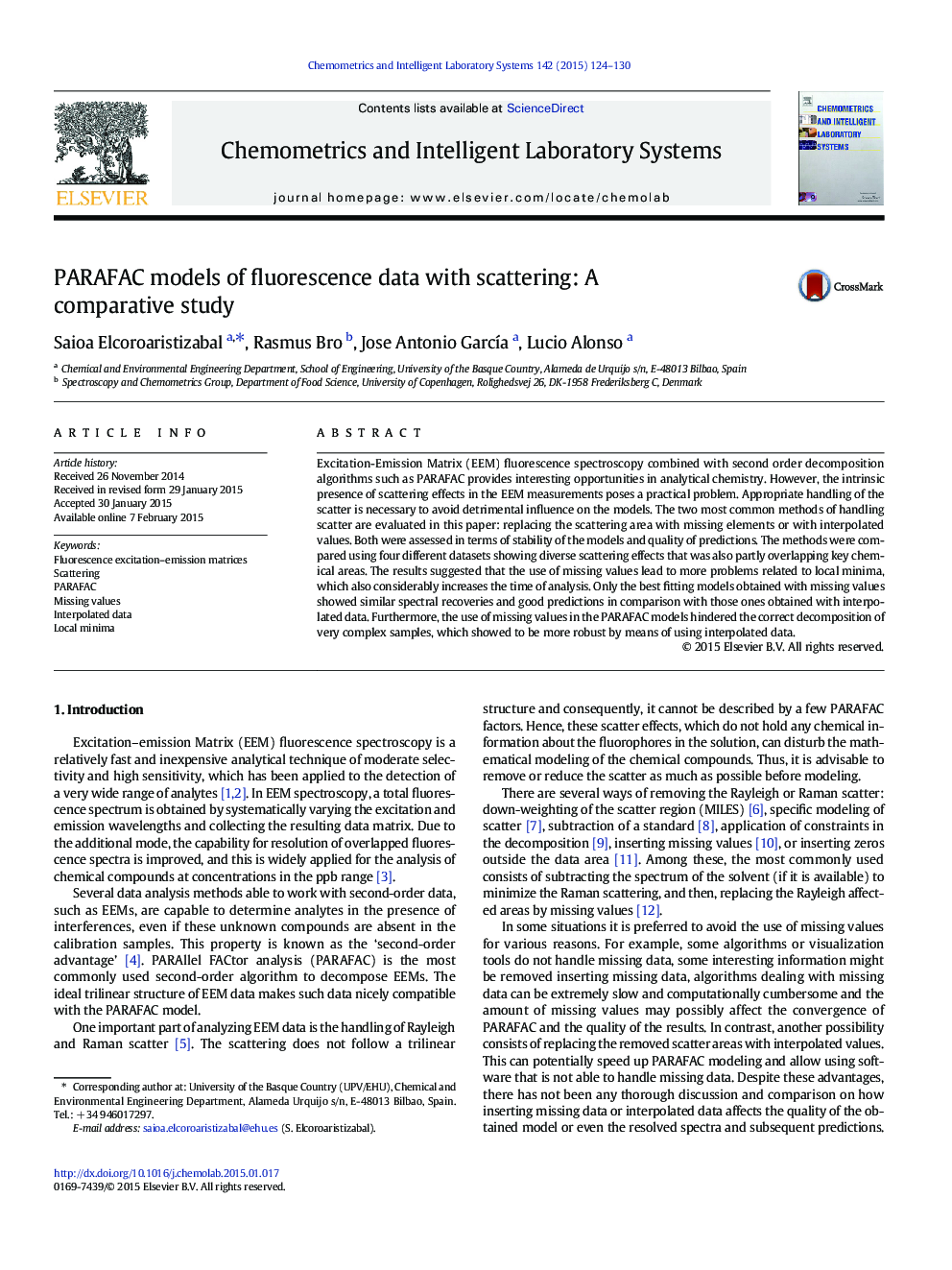| Article ID | Journal | Published Year | Pages | File Type |
|---|---|---|---|---|
| 1180514 | Chemometrics and Intelligent Laboratory Systems | 2015 | 7 Pages |
•Handling of different scattering problems in EEM fluorescence data•Comprehensive comparison between missing data and interpolation to improve PARAFAC performance•Missing values lead to more problems related to local minima.•Interpolated data prevent the convergence to local minima and lead to more reliable models.
Excitation-Emission Matrix (EEM) fluorescence spectroscopy combined with second order decomposition algorithms such as PARAFAC provides interesting opportunities in analytical chemistry. However, the intrinsic presence of scattering effects in the EEM measurements poses a practical problem. Appropriate handling of the scatter is necessary to avoid detrimental influence on the models. The two most common methods of handling scatter are evaluated in this paper: replacing the scattering area with missing elements or with interpolated values. Both were assessed in terms of stability of the models and quality of predictions. The methods were compared using four different datasets showing diverse scattering effects that was also partly overlapping key chemical areas. The results suggested that the use of missing values lead to more problems related to local minima, which also considerably increases the time of analysis. Only the best fitting models obtained with missing values showed similar spectral recoveries and good predictions in comparison with those ones obtained with interpolated data. Furthermore, the use of missing values in the PARAFAC models hindered the correct decomposition of very complex samples, which showed to be more robust by means of using interpolated data.
